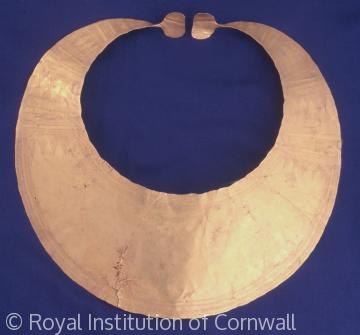Prehistory Archaeology

In the area later occupied by Paul and its neighbouring parishes, prehistoric settlement was concentrated in the upland areas away from the coast. Here there are stone circles, fogous (underground passages), menhirs and burial mounds. Extensive marshes in the central part of the land beside Mount's Bay deterred habitation.
Finds from the neighbourhood of later Mousehole include a greenstone pounder from Raginnis of Neolitic date and a copper axe head from Penolva of the late Neolithic or early Bronze Age. Bronze Age burial urns of c.2500-1400 BC were dug up in the south-west of the parish at Tresvennack and Trevelloe. The most intriguing, but now lost find was a gold lunula (neck ornament) from a high status site in Paul or Madron.
The first identifiable settlements in Paul parish were Iron Age or Romano- British settlements of c.150 BC-400AD. There was a hill fort at Tredavoe with 14 rounds (circular defensive enclosures). There was also a courtyard house found near to Castallack round.
Content generated during research for the paperback book 'Cornwall and the Coast: mousehole and Newlyn' (ISBN 13 : 978-1-86077-489-8) for the England's Past for Everyone series

